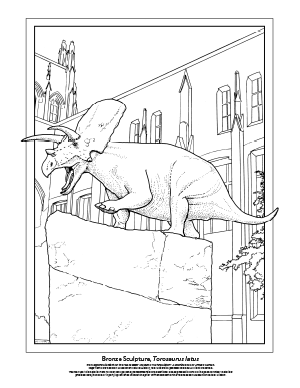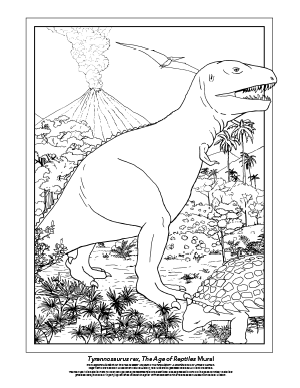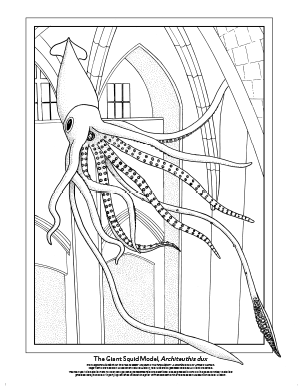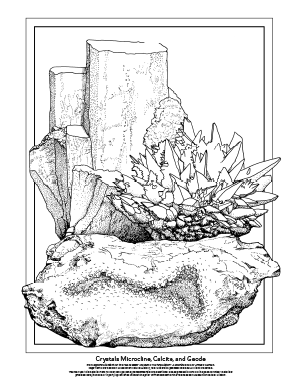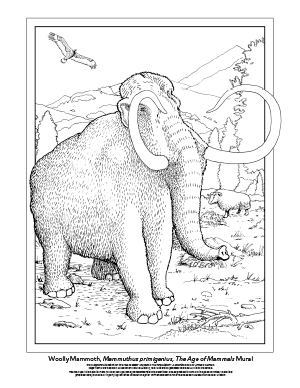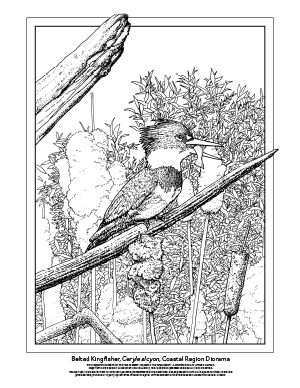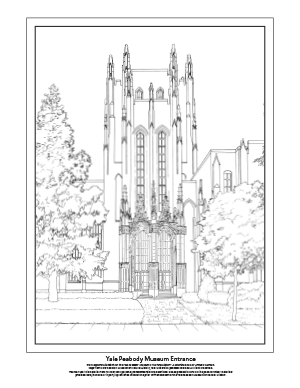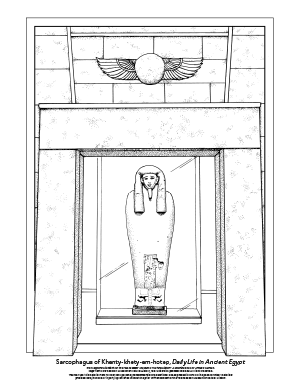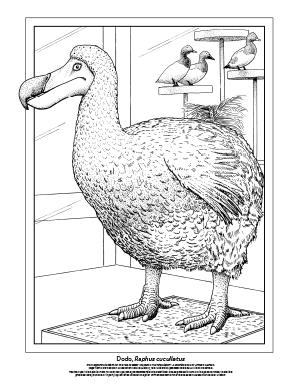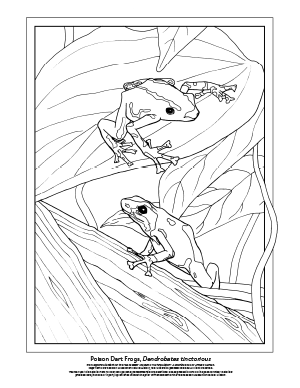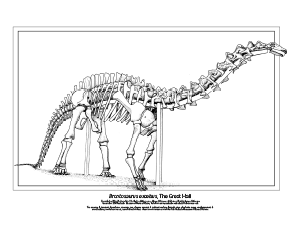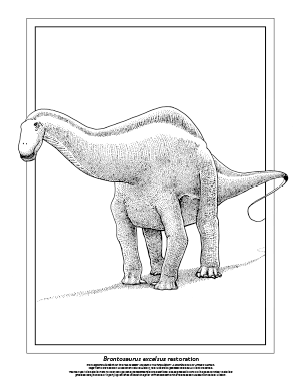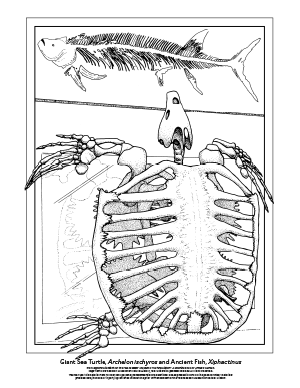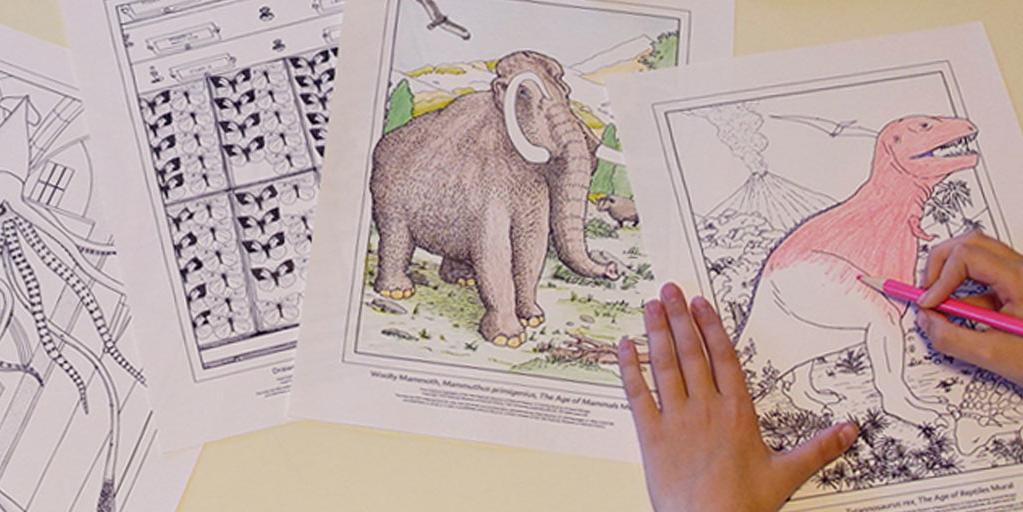
Bring to life your favorite exhibits in the Yale Peabody Museum galleries with these illustrations of highlights from the more than 13 million specimens and objects in the Peabody's collections, illustrated by Armand Morgan.
Browse the individual pages below to learn more and download individual PDFs, or download the entire book... all for free!
The bronze statue of Torosaurus latus outside the Peabody Museum is the first full-scale reconstruction of this dinosaur. Because only parts of its skull and skeleton have ever been found, the sculpture is based on extinct and living Torosaurus relatives such as hadrosaurs, birds, alligators, turtles, and even mammals.
Rudolph Zallinger's The Age of Reptiles is a timeline that illustrates the evolution of plants and animals across 300 million years of Earth's history. This detail from the Cretaceous Period, the most recent geological section, shows Tyrannosaurus rex, the largest meat-eating animal that has ever lived in North America.
Visitors to the Peabody Museum's lobby are greeted by a 37-foot (11-meter) suspended life-size fiberglass, foam, and steel model of Architeuthis dux. The giant squid is the largest living invertebrate. It has two long club-shaped tentacles studded with suckers for grasping prey and the largest eye of any animal.
These three specimens are from the Peabody's Mineralogy collection, begun around 1802. At the bottom is a geode from Arizona with white quartz inside and blue-green chrysocolla outside. The spiky calcite crystal, from Australia, is milky white. The third specimen is a microcline from Colorado with light green rectangular crystals.
Rudolph Zallinger's The Age of Mammals mural in the Museum's Hall of Mammalian Evolution shows this woolly mammoth in the Pleistocene of western North America. Known for its impressive long curving tusks, the woolly mammoth has chewing teeth that show it is closely related to the modern elephant.
The Belted Kingfisher is shown in the cattail marsh of the Coastal Region diorama in the Museum's Hall of Southern New England. The head and wings are slate blue and it has a white chin, throat, and neck. This bird's rust-colored belly band, not seen on males, means that it is a female.
This scene shows the excavation of a 1.5 million-year-old fossilized lower jaw of Paranthropus, an ancestor of modern humans that lived in Africa. Delicate fossils like this are dug with dental tools and brushes rather than picks and shovels. The specimen label identifies BPRP as the location and KNM as the Kenyan National Museum.
The second and current Peabody Museum building, designed by gothicist Charles Klauder, opened to the public in 1926. The tall tree at left is Metasequoia, the dawn redwood. These trees from the reign of Tyrannosaurs rex were thought extinct until they were rediscovered in remote valleys in China in the 1940s.
Just inside the entrance to the Daily Life in Ancient Egypt exhibition stands the lid of the Late Period stone sarcophagus that belonged to Khenty-khety-em-hotep, named in the hieroglyphics at his feet. The dog-like silhouettes near the bottom represent Anubis, the god in charge of caring for the mummy inside.
The Dodo was a large flightless relative of the pigeon that lived on the island of Mauritius in the Indian Ocean. Because it was extinct by 1681 no one today really knows exactly what it looked like. The Museum's full-size model is based on fossil bones and historical drawings and descriptions.
Poison dart frog skin is toxic because of their diet of ants, beetles, and termites in the rainforests of Central and South America. Their bright blue, green, red, and black markings warn predators that the frogs taste bad. The Peabody's Discovery Room frogs are not poisonous because they are fed only fruit flies and crickets.
The nearly 14 million specimens and objects in the Yale Peabody Museum collections are from every continent and most historic and prehistoric time periods. Each specimen in this drawer of butterflies from the Entomology collection is labeled with its species name, the date and place it was collected, and the collector's name.
The 65-foot (almost 20-meter) Brontosaurus excelsus has amazed visitors for over 75 years. The Peabody Museum's Great Hall was designed for this specimen, which took more than three years to mount. The nearly complete skeleton was discovered near Como Bluff, Wyoming, in 1879 and named by Yale paleontologist, O. C. Marsh.
This restoration illustrates what we have learned about Brontosaurus since the Museum's specimen was first displayed in 1931—different front feet and head, a longer neck, and a longer tail that was held upright. The Peabody's beloved Brontosaurus will be remounted for the Museum's renovation to reflect current scientific knowledge.
This magnificent 11-foot-long specimen was the first Archelon discovered. It is still one of the most complete known though it is missing a right lower paddle which may have been bitten off by a predator. Archelon ischyros and the ancient fish Xiphactinus lived in a vast shallow seaway that covered large parts of western North America between 65 and110 million years ago.
From Explore! Highlights of the Yale Peabody Museum of Natural History: A Coloring Book by Armand Morgan. Copyright 2019 Peabody Museum of Natural History, Yale University; peabody.yale.edu. All rights reserved.
You may use this material from for your own personal, noncommercial or educational use. Reproduction of coloring pages or other materials provided here, in whole or in part, is prohibited without the prior written consent of the Yale Peabody Museum of Natural History.
